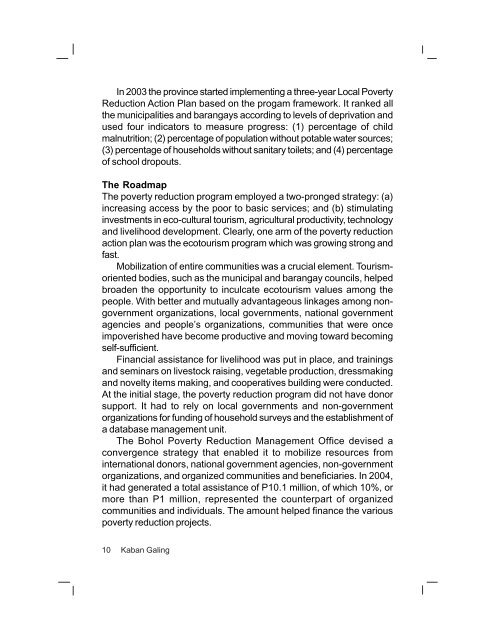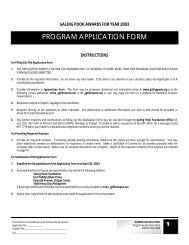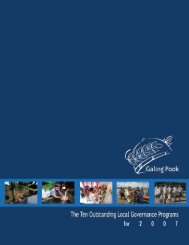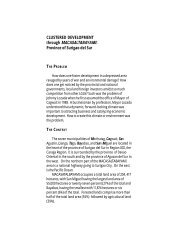kaban galing - front cover - galing pook
kaban galing - front cover - galing pook
kaban galing - front cover - galing pook
You also want an ePaper? Increase the reach of your titles
YUMPU automatically turns print PDFs into web optimized ePapers that Google loves.
In 2003 the province started implementing a three-year Local Poverty<br />
Reduction Action Plan based on the progam framework. It ranked all<br />
the municipalities and barangays according to levels of deprivation and<br />
used four indicators to measure progress: (1) percentage of child<br />
malnutrition; (2) percentage of population without potable water sources;<br />
(3) percentage of households without sanitary toilets; and (4) percentage<br />
of school dropouts.<br />
The Roadmap<br />
The poverty reduction program employed a two-pronged strategy: (a)<br />
increasing access by the poor to basic services; and (b) stimulating<br />
investments in eco-cultural tourism, agricultural productivity, technology<br />
and livelihood development. Clearly, one arm of the poverty reduction<br />
action plan was the ecotourism program which was growing strong and<br />
fast.<br />
Mobilization of entire communities was a crucial element. Tourismoriented<br />
bodies, such as the municipal and barangay councils, helped<br />
broaden the opportunity to inculcate ecotourism values among the<br />
people. With better and mutually advantageous linkages among nongovernment<br />
organizations, local governments, national government<br />
agencies and people’s organizations, communities that were once<br />
impoverished have become productive and moving toward becoming<br />
self-sufficient.<br />
Financial assistance for livelihood was put in place, and trainings<br />
and seminars on livestock raising, vegetable production, dressmaking<br />
and novelty items making, and cooperatives building were conducted.<br />
At the initial stage, the poverty reduction program did not have donor<br />
support. It had to rely on local governments and non-government<br />
organizations for funding of household surveys and the establishment of<br />
a database management unit.<br />
The Bohol Poverty Reduction Management Office devised a<br />
convergence strategy that enabled it to mobilize resources from<br />
international donors, national government agencies, non-government<br />
organizations, and organized communities and beneficiaries. In 2004,<br />
it had generated a total assistance of P10.1 million, of which 10%, or<br />
more than P1 million, represented the counterpart of organized<br />
communities and individuals. The amount helped finance the various<br />
poverty reduction projects.<br />
10 Kaban Galing












![[Year] Paano Tayo Aasenso? - Galing Pook Foundation](https://img.yumpu.com/3809385/1/184x260/year-paano-tayo-aasenso-galing-pook-foundation.jpg?quality=85)